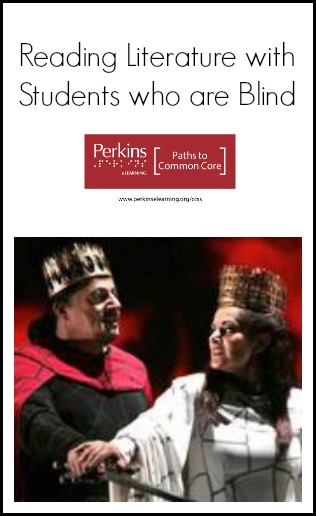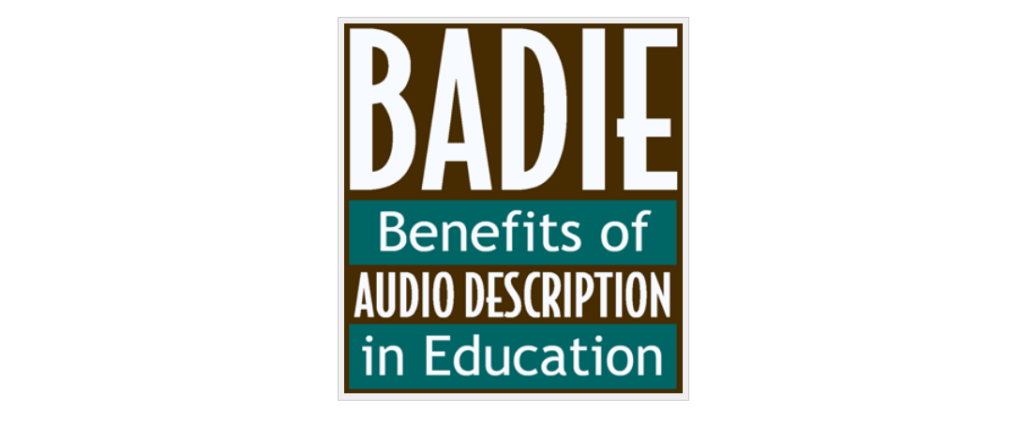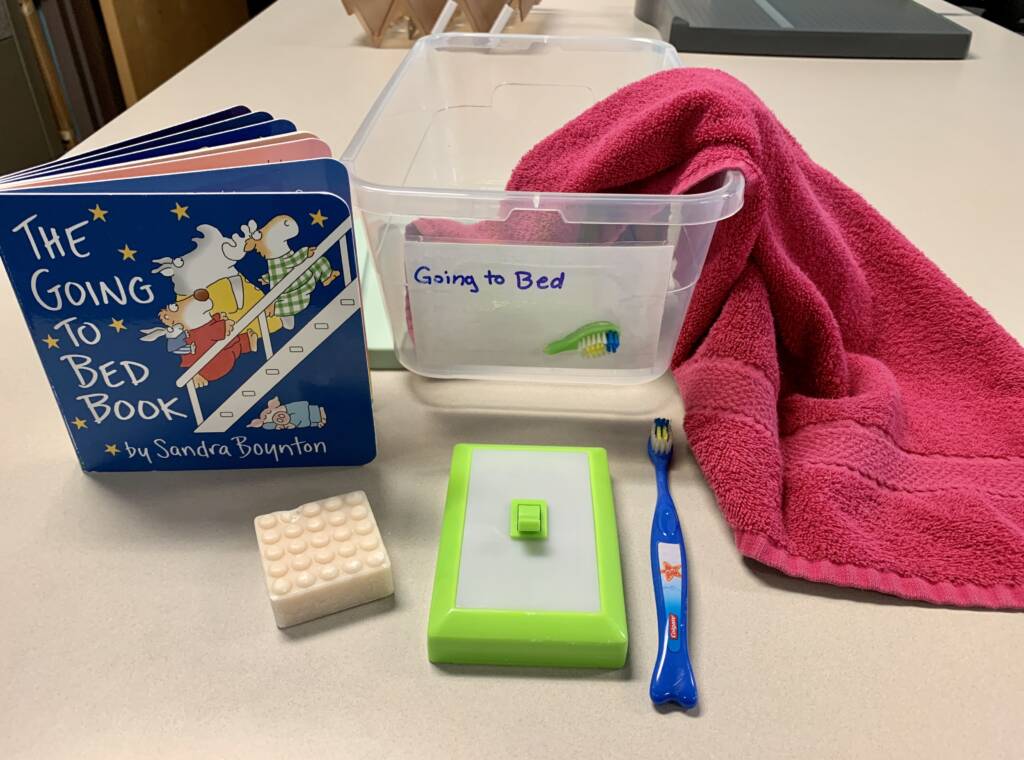In this lesson, students perform a part of Macbeth and then discuss how the student groups staged the assigned scenes.
Objective: Students read aloud Act II, Scenes 1-4 and analyze the dialogue of the crime scene
Other foundational skills:
- Familiarity with plays
- Ability to stage a scene
- Ability to work within a group
This lesson is adapted from a submission by Emily Hyland, formerly of Urban Assembly for Green Career, NYC Board of Education.
Materials
- Access to Macbeth in braille, large-print, or electronically as preferred by student who is visually impaired
Procedure
- Students form into groups of five, each group assigned to a specific scene
- Students are given 20 minutes to figure out what is going on in the scene and how to stage it. The group must decide how many characters are needed, who says what and when, who enters and exits. The lines must be divided up so that each member of the group has a speaking part. No lines may be cut; the group’s task is to assign all the lines and plan out every action in the scene
- Each group stages its scene for the rest of the class
- Students respond to: What patterns or consistencies emerged in how the characters’ lines were assigned and how the scenes were staged?
- Students re-group and assign themselves roles and read the first four scenes of the act aloud, stopping at the end of each scene to write a one-sentence summary of the scene’s events
- After reading period is over, each group writes summary sentences for scenes on chart paper
- Each group shares scene summaries: What happens in each scene? What are the most important events of this act so far? What are the similarities and/or differences of some of the summaries?
- Final summary: How is tension building in the play as a result of the murder scene in conjunction with the rest of the events in Act II?
Variations
- Remind students that entrance and exit points must be specifically delineated, especially for the student who is visually impaired
- Assign a partner to the student who is visually impaired to show her entrance and exit points if her part requires movement
- When writing summary sentences on chart paper, student who is visually impaired can dictate a sentence, recorded by an assigned group member





